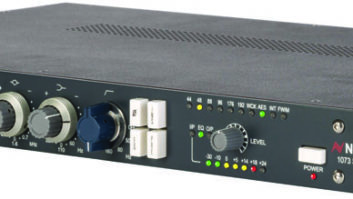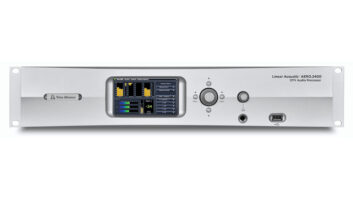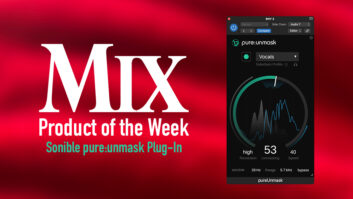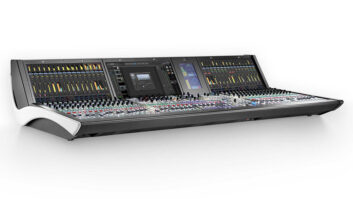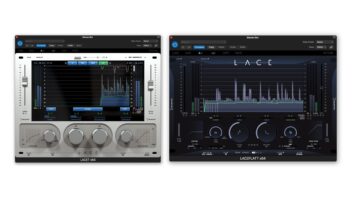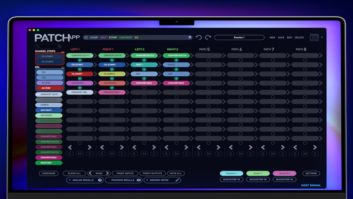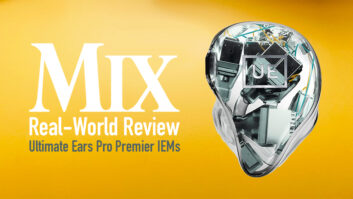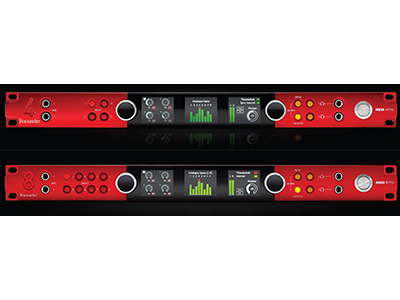
On the heels of the AES convention, networked audio systems, and specifically ones featuring Dante—the leading audio over Internet protocol (AoIP) by Audinate—are multiplying in the marketplace. Though initially popularized in live sound, theater and A/V-based applications, music recording and production facilities are quickly realizing the bottomless cup of routing and distribution possibilities when traditional patch bays and analog routing via copper line are swapped out for AoIP technologies.
Though it is still a burgeoning category, hardware processors offering AoIP (predominately Dante) connectivity features are increasingly available in the marketplace. Boasting zero-latency round-trip I/O at high channel counts, facilities of all types may consider such Dante-enhanced gear, currently built by mainstream manufacturers and boutique builder’s shops alike.
HARDWARE, NOW NETWORKED
One of the best examples of robust Dante-enabled hardware is Focusrite’s RedNet Series of Ethernet-networked audio interfaces. At the recent 141st AES Convention, Focusrite unveiled its latest high-channel count Red 4 and Red 8 “Air” enabled mic pre-I/O units. Specifically, Red 4 features four Focusrite “air enabled” mic preamps with 63 dB of gain; two 1/4-inch front panel Hi-Z inputs; three displays (Input, Level Meter, Output); and dual Thunderbolt 2, Pro Tools HD and Dante network connectivity.
Key features of the I/O-packed Red 8Pre include 64 inputs, 64 outputs, eight digitally controlled mic preamps, 16 analog inputs and 18 analog outputs; it features identical network connectivity as the Red 4. Both include Focusrite Control software, allowing mic preamp control and the setup of mixes and monitors; the Red plug-in suite; and Softube’s Time and Tone bundle.

Millenia Media G?zowta
In reviewing the Red 4 Pre, colleague Rich Tozzoli raved about its sound as well as its future-proofed feature set. “What I like most about Red4Pre is its power and flexibility,” he explains. “In a single rackspace, you’ve got a full DAW front end with great-sounding preamps and the ability to hook up to most any system, including Pro Tools HDX rigs. The preamps are exactly what you would expect from the legendary Red series, and the unit overall feels, looks and sounds great. Add in software control from your desktop and this becomes ones seriously cool rig.”
Millennia Media, the world-class analog preamp and signal flow hardware manufacturer, recently introduced its DA-296 G?zowta Dante to Analog Converter, connecting any two channels of Dante to analog gear up to 96 kHz with level-controlled 1/8- and 1/4-inch jacks in tow, marking Millennia’s fourth Dante-oriented product.
Priced at $449 street, the G?zowta DA-296 can be used as part of a personal monitor system or for trouble-shooting Dante audio streams. Outputs include balanced XLR and Phoenix-style connectors. Power is supplied by the Ethernet cable from PoE (power over Ethernet) enabled switches or in-line PoE injectors. Also included is a -10dBV/+4dBu output reference level switch to accommodate most analog equipment. The G?zowta DA-296 is the same size as Millennia’s portable preamp series, housed in a road-ready 1/3-rack width chassis, and as such can be bolted to a rack tray.

Grace Design M108
Another world-class pro audio firm, Grace Design, is shipping its latest multichannel preamp—the m108 eight-channel mic pre/ADC/DAC/Interface, available with its optional Dante interface module. The m108 features an array of input and output options, with eight full XLR mic inputs, DB-25 balanced analog out and AES3 out, two ADAT optical outputs, a USB 2.0 jack, Word Clock I/O, RS422 and MIDI I/O for Pro Tools HD control. The unit provides a slot for the optional Dante network audio card and an Ethernet jack for IP control with upcoming software control and AC power input.
Also recently reviewed by Rich Tozzoli, the m108 hits all the high points in his book. “It’s exactly what I need it to be: a high-quality, high-end pristine preamp that I can quickly navigate,” he boasts. “Taking it further, it makes a great, feature-rich DAW front end for smaller rigs, such as UA Apollo-based ones, with extensive and easy integration. Simply put, what goes into the m108 will be exactly what comes out. Grace Design nailed it here.”

Lynx Hilo
Meanwhile manufacturers such as Lynx Studio Technology are actively revamping their product lines to allow Dante connectivity. LT-DANTE, an LSlot interface for Lynx’s Aurora and Hilo converters, was recently introduced with three LT-DANTE ready converters: the Hilo-DT, Aurora 8-DT and Aurora 16-DT models. Notably, any existing Hilo or Aurora owner can add the new LSlot, so original customers can upgrade, too.

Lynx Aurora
Having recently reviewed both the Aurora and Hilo converters, another colleague, Russ Long, was quick to explain why he chooses to use Lynx conversion products. Now, with the LT-DANTE LSlot interface available, investing in Lynx gear makes even more sense, he explains, when their stellar customer service is considered.
“Lynx makes great products with no sonic compromise whatsoever,” offers Long. “Their manuals are well-written and concise, and their tech-support is among the best I’ve ever encountered. I’m constantly integrating new gear and experimenting with new technology in my studio and I’ve called or emailed tech support several times over the years and I’ve always received excellent support. If the technician didn’t know the answer to my question, he was more than willing to research it and get back to me in an amazingly brief amount of time. In short, I can’t say enough good things about Lynx.”

Burl M80 Mothership
Burl Audio is an analog processing design/builder based in Paradise Recording, a commercial studio in Santa Cruz, Calif. Burl builds some of the most impressive, proudly overbuilt and lovely sounding analog I/O- and conversion-centric gear available today, which makes its dedication to Dante compatibility even cooler.
Announced at AES, Burl’s flagship offerings such as the B20 Mothership, B2 Bomber ADC and B2 Bomber DAC are now available Dante-ready. Specifically, the flagship B20 Mothership is a massive configurable AD/DA offering up to 80 channels of I/O and weighing in at 60 pounds fully loaded. Because of its fully flexible architecture, it can be loaded up in a variety of ways; Burl suggests eight BDA8 cards, comprising 64 channels, for mix engineers or six BAD4 cards for 24 B2 inputs, and four BDA8 cards for 32 channels of outputs, for live tracking purposes.
BUT WAIT—THERE’S MORE
Dante is hardly the only AoIP studio network protocol on the map. At October’s AES Convention, Yamaha took the opportunity to announce that its Dante-equipped products will connect with other audio networks via AES67, notably Ravenna. Yamaha’s broad product range spans live sound to recording; this is a clear indication that they are committed to staying on top of AoIP possibilities.

Genelec 8430A
While we’re primarily looking at hardware processing here, recent product unveilings demonstrate that AoIP technology is enabling advances in other areas of the audio chain, too. Case in point: Genelec— ahead of the curve, as usual—has unveiled its 8430A AoIP SAM Studio Monitor, the first studio monitor available that supports AES67 and Ravenna standards. Key features of the 8430A AoIP SAM monitor include a 5-inch woofer and 0.75-inch metal dome tweeter with Genelec’s Directivity Control Waveguide (DCW); 50 W x 50 W bi-amped power; a 58 Hz – 20 kHz (+/- 1.5 dB) frequency response; and a maximum SPL of 104 dB.

Neutrik Xifrium Pro
With all this new connectivity, AoIP innovation is notably underway at Neutrik, now offering an expanded etherCON line via Cat 5e and Cat 6A connectors, as well as its impressive Xifrium Pro line of wireless digital cable “replacements.” Xifrium Pro is a modular system with available I/O modules for analog, AES and Dante formats.
Low latency is a key component to Neutrik’s Xirium Pro line; it is built around Neutrik’s DiWA (Digital Wireless Audio) technology, which reportedly provides compression-free, FCC license-free, wireless transmission of audio within the 5 GHz band. The 20 Hz to 20 kHz audio transmission system reportedly offers latency equal to 3 milliseconds regardless of how many Xirium Pro devices are used.
